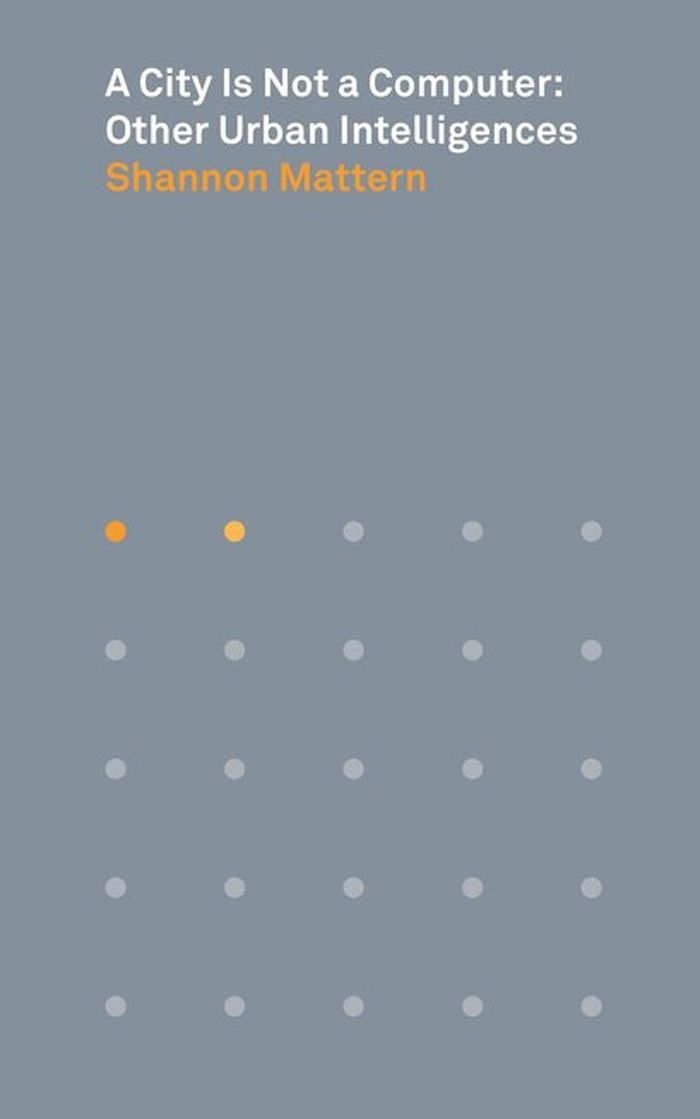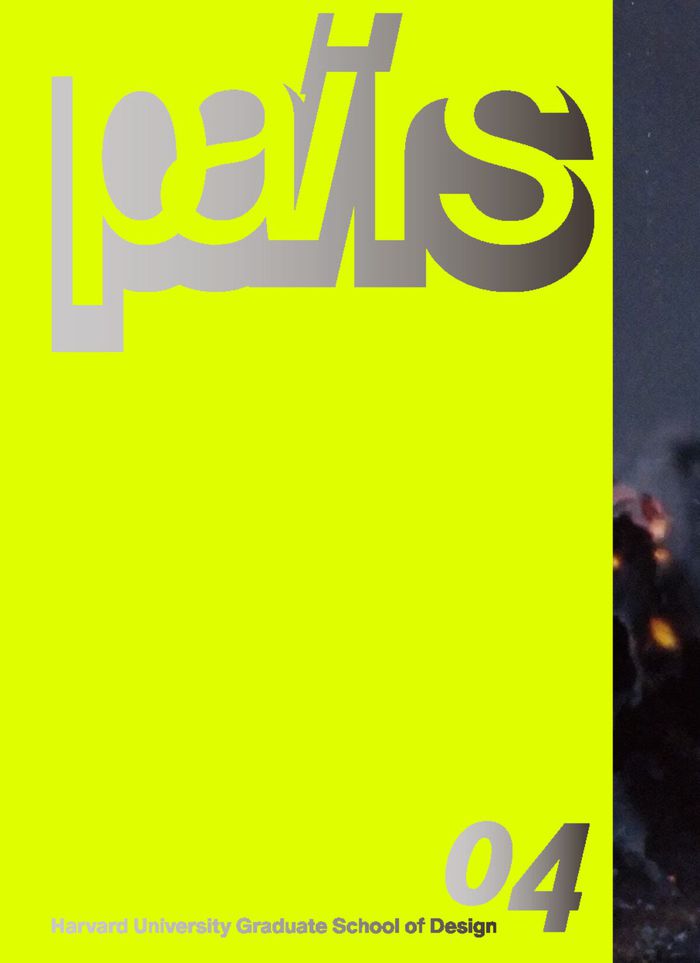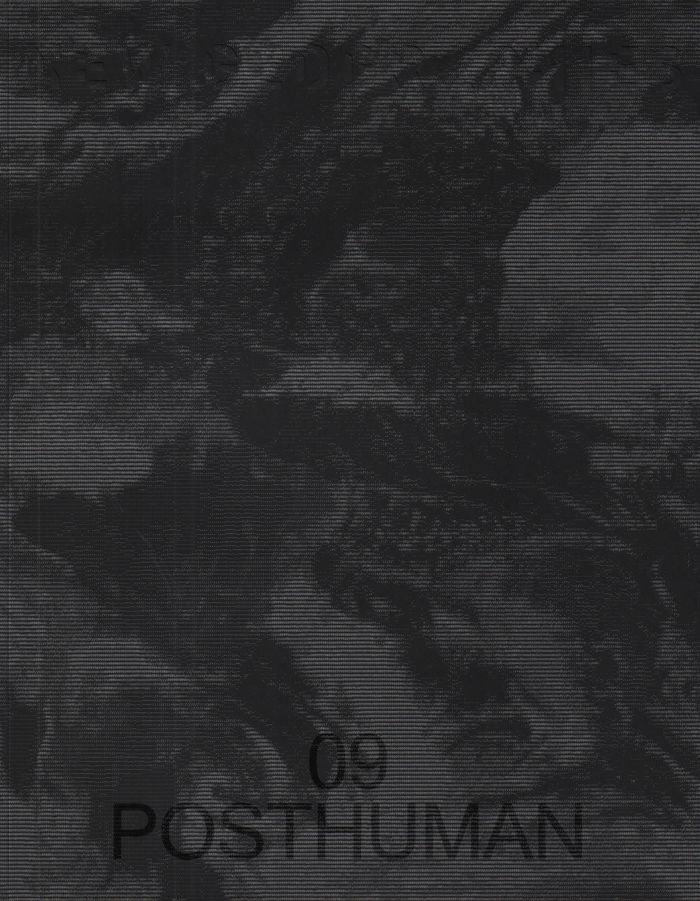$40.50
(available to order)
Summary:
Offering new ways of thinking about our cities, Code and Clay, Data and Dirt goes far beyond the standard historical concepts of origins, development, revolutions, and the accomplishments of an elite few. Mattern shows that in their architecture, laws, street layouts, and civic knowledge—and through technologies including the telephone, telegraph, radio, printing,(...)
Code and clay, data and dirt: five thousand years of urban media
Actions:
Price:
$40.50
(available to order)
Summary:
Offering new ways of thinking about our cities, Code and Clay, Data and Dirt goes far beyond the standard historical concepts of origins, development, revolutions, and the accomplishments of an elite few. Mattern shows that in their architecture, laws, street layouts, and civic knowledge—and through technologies including the telephone, telegraph, radio, printing, writing, and even the human voice—cities have long negotiated a rich exchange between analog and digital, code and clay, data and dirt, ether and ore. Mattern’s vivid prose takes readers through a historically and geographically broad range of stories, scenes, and locations, synthesizing a new narrative for our urban spaces. Taking media archaeology to the city’s streets, Code and Clay, Data and Dirt reveals new ways to write our urban, media, and cultural histories.
Urban Theory
books
Description:
xxviii, 342 pages, 16 unnumbered pages of plates : illustrations (some color) ; 24 cm
Cambridge, Massachusetts : The MIT Press, [2019], ©2019
Bauhaus futures / edited by Laura Forlano, Molly Wright Steenson, and Mike Ananny.
Actions:
Holdings:
Description:
xxviii, 342 pages, 16 unnumbered pages of plates : illustrations (some color) ; 24 cm
books
Cambridge, Massachusetts : The MIT Press, [2019], ©2019
$25.00
(available to order)
Summary:
Computational models of urbanism — smart cities that use data-driven planning and algorithmic administration — promise to deliver new urban efficiencies and conveniences. Yet these models limit our understanding of what we can know about a city. 'A City Is Not a Computer' reveals how cities encompass myriad forms of local and indigenous intelligences and knowledge(...)
A city is not a computer: other urban intelligences
Actions:
Price:
$25.00
(available to order)
Summary:
Computational models of urbanism — smart cities that use data-driven planning and algorithmic administration — promise to deliver new urban efficiencies and conveniences. Yet these models limit our understanding of what we can know about a city. 'A City Is Not a Computer' reveals how cities encompass myriad forms of local and indigenous intelligences and knowledge institutions, arguing that these resources are a vital supplement and corrective to increasingly prevalent algorithmic models.
Urban Theory
$20.00
(available in store)
Summary:
Pairs 04 features conversations with Danielle Aubert, Melanie Boehi, Fernanda Canales, Theaster Gates, Stefanie Hessler, Eric Robsky Huntley, Ryan W. Kennihan, Yasmeen Lari, Mae-ling Lokko, Þóra Pétursdóttir, Sergio Lopez-Pineiro, Shannon Mattern, Jeffrey Shaw, Kate Wagner, and Emily Wettstein.
Pairs 04
Actions:
Price:
$20.00
(available in store)
Summary:
Pairs 04 features conversations with Danielle Aubert, Melanie Boehi, Fernanda Canales, Theaster Gates, Stefanie Hessler, Eric Robsky Huntley, Ryan W. Kennihan, Yasmeen Lari, Mae-ling Lokko, Þóra Pétursdóttir, Sergio Lopez-Pineiro, Shannon Mattern, Jeffrey Shaw, Kate Wagner, and Emily Wettstein.
Magazines
$38.95
(available to order)
Summary:
Interpreting design as a geographical agent deeply involved in the territorial engravings of contemporary urbanization, "New geographies 09" investigates the urban landscapes shaping the posthuman geographies of the early 21st century, fostering a wide-ranging debate about both the potentials and challenges for design to engage with the complex spatialities,(...)
New Geographies 09: Post-human
Actions:
Price:
$38.95
(available to order)
Summary:
Interpreting design as a geographical agent deeply involved in the territorial engravings of contemporary urbanization, "New geographies 09" investigates the urban landscapes shaping the posthuman geographies of the early 21st century, fostering a wide-ranging debate about both the potentials and challenges for design to engage with the complex spatialities, more-than-human ecologies, and diverse forms and habits of life in a post-anthropocentric world. With Contributions by Rosalind Williams, Erik Swyngedouw, Cary Wolfe, McKenzie Wark, Jason Moore, Benjamin Bratton, Luciana Parisi, Eyal Weizman, Shannon Mattern, Rosetta Elkin, Mimi Sheller, and Stephen Graham, among others.
Magazines



